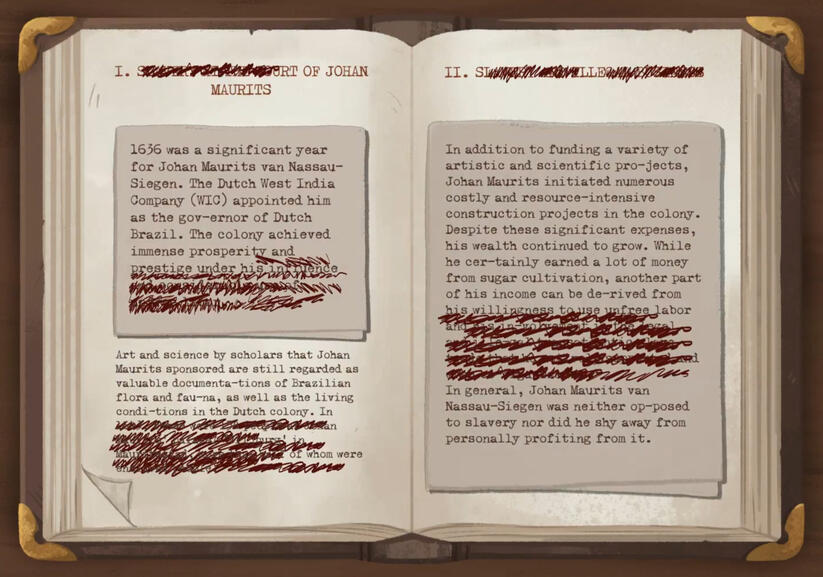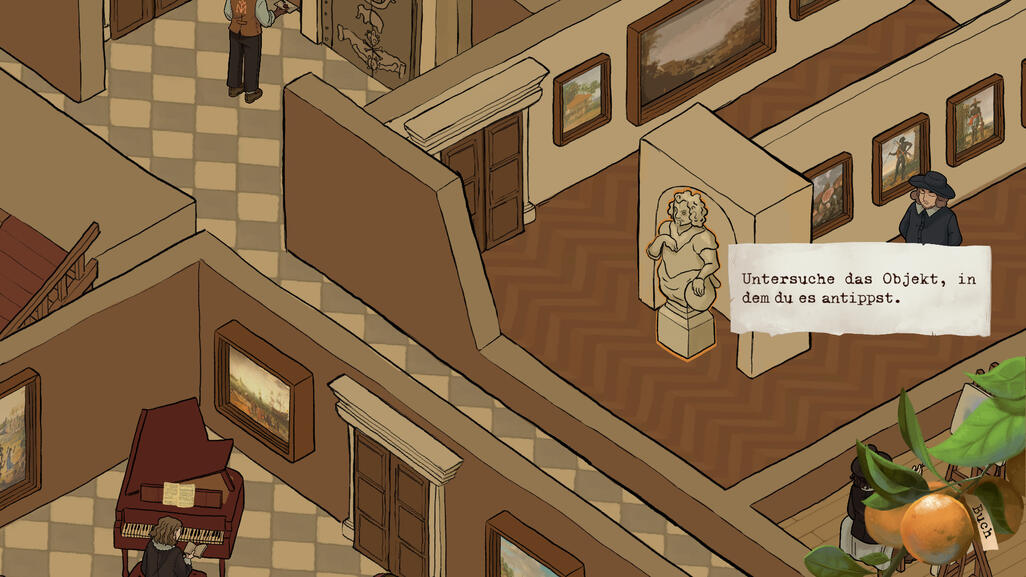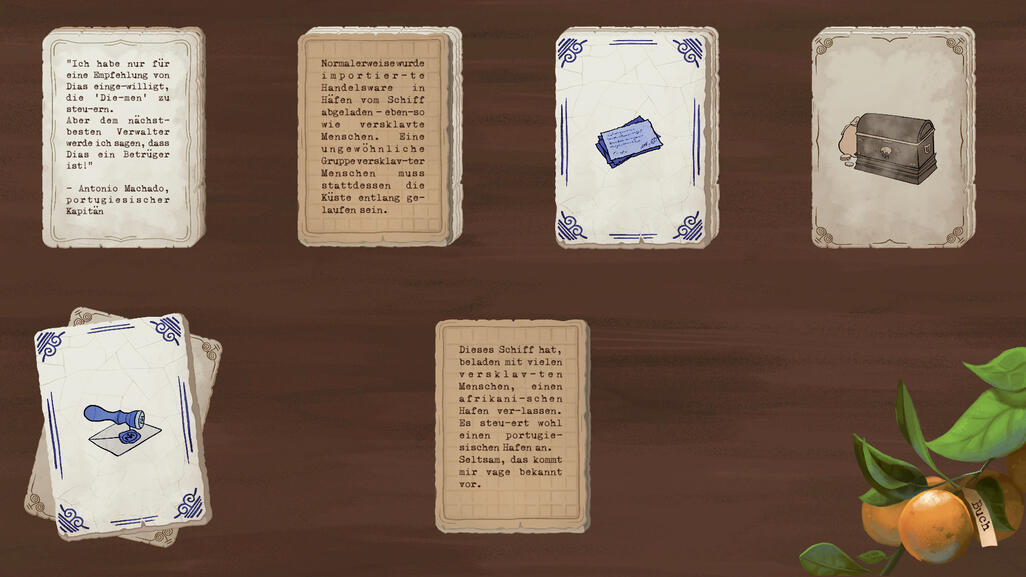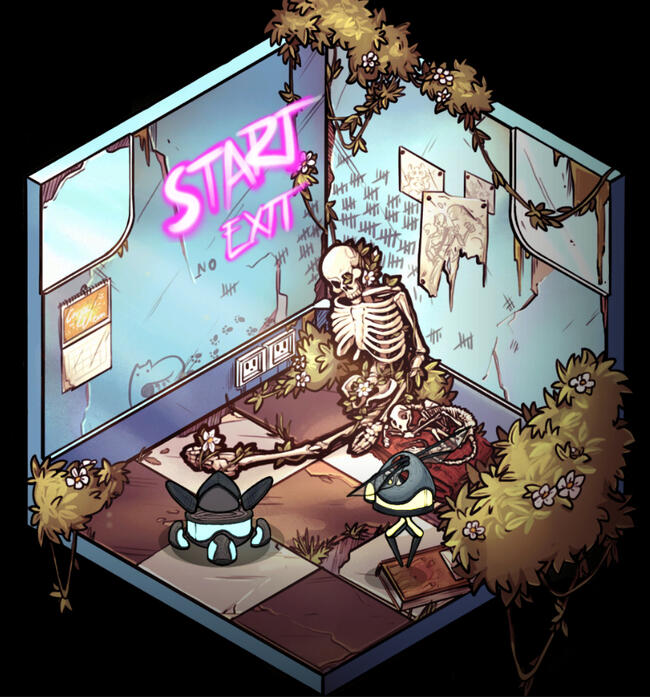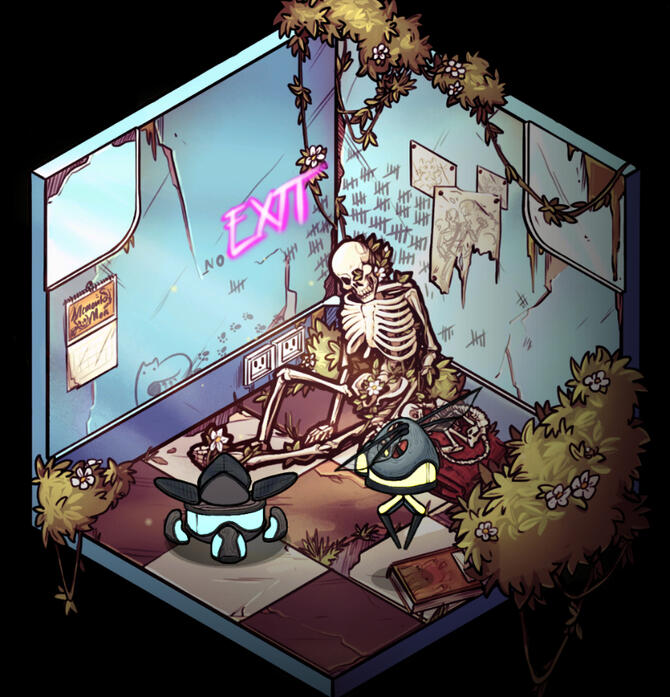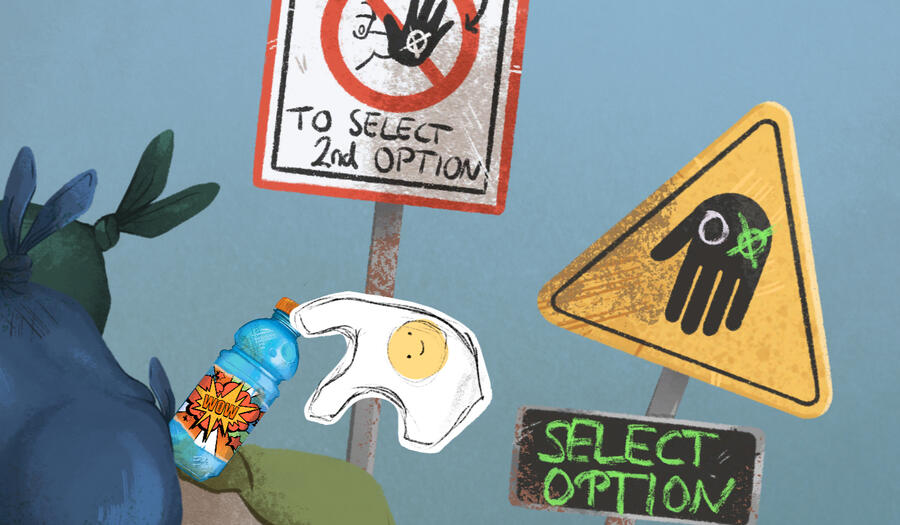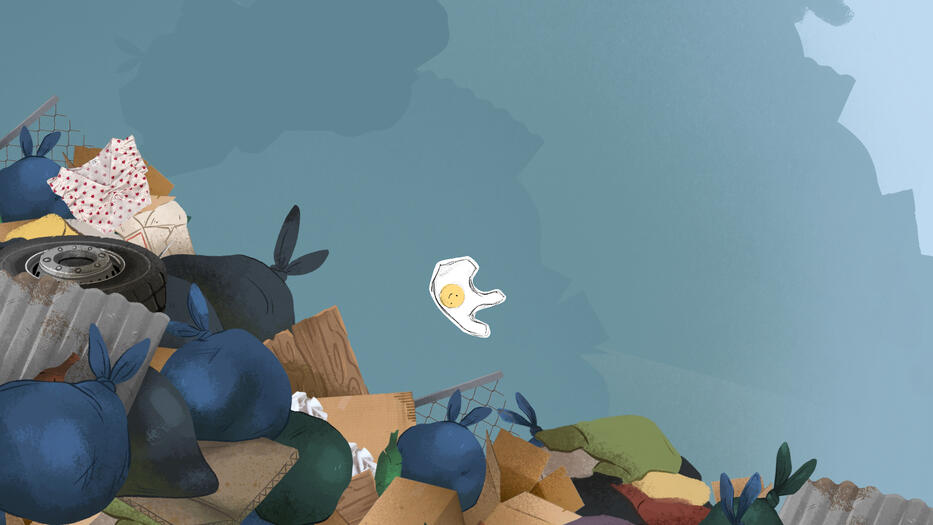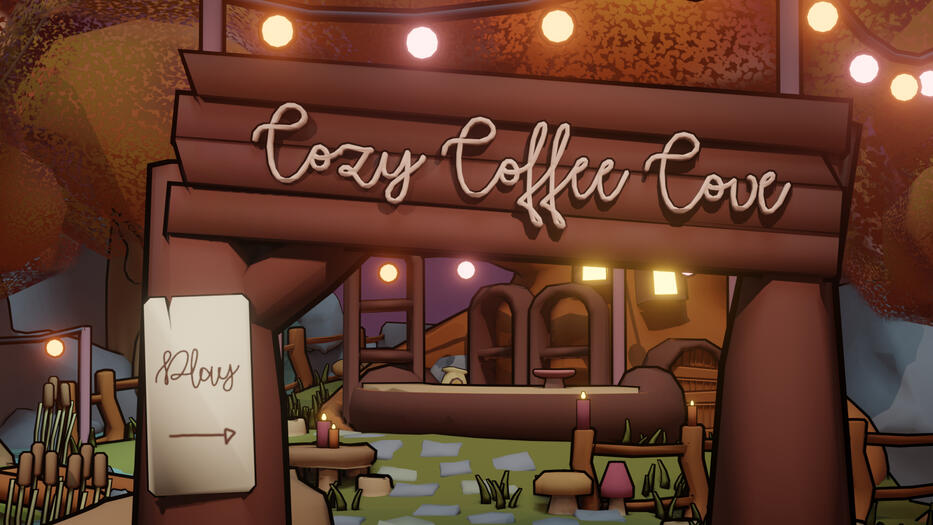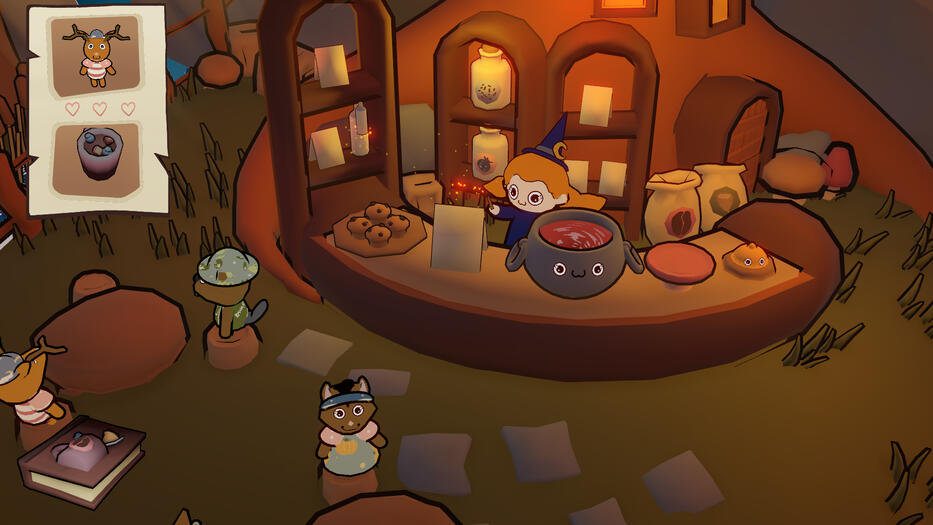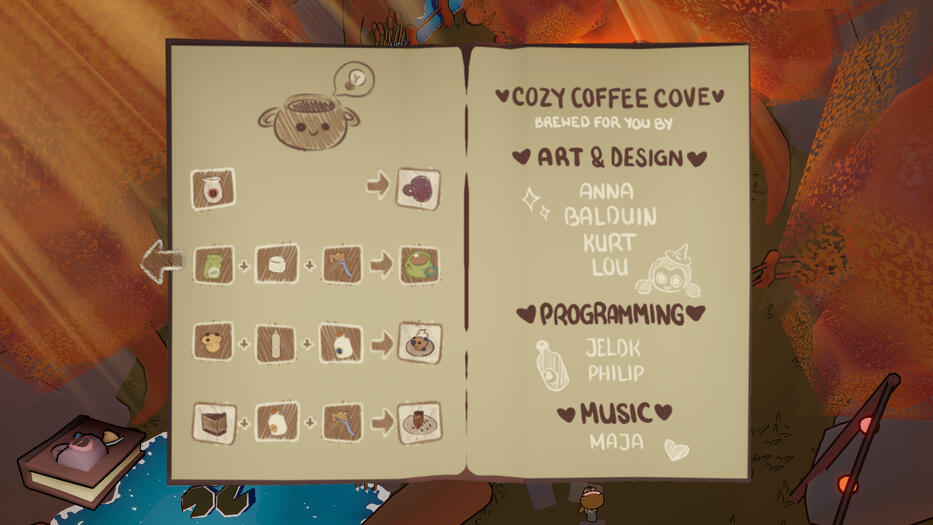Anna (Cass) Oberhauser
Game Designer
Specializations: Narrative Design, World Building, Impact Games
Hi, I'm Cass, an aspiring game designer.
I am currently finishing my studies at the Cologne Game Lab. My goal is to create compelling, immersive game worlds that leave a lasting impression on the player. I specialize in narratives, world-building, and game direction. My strengths lie in my conscientious attitude, ability to keep the big picture and finer details in mind, and openness to ideas and inspirations from my environment.
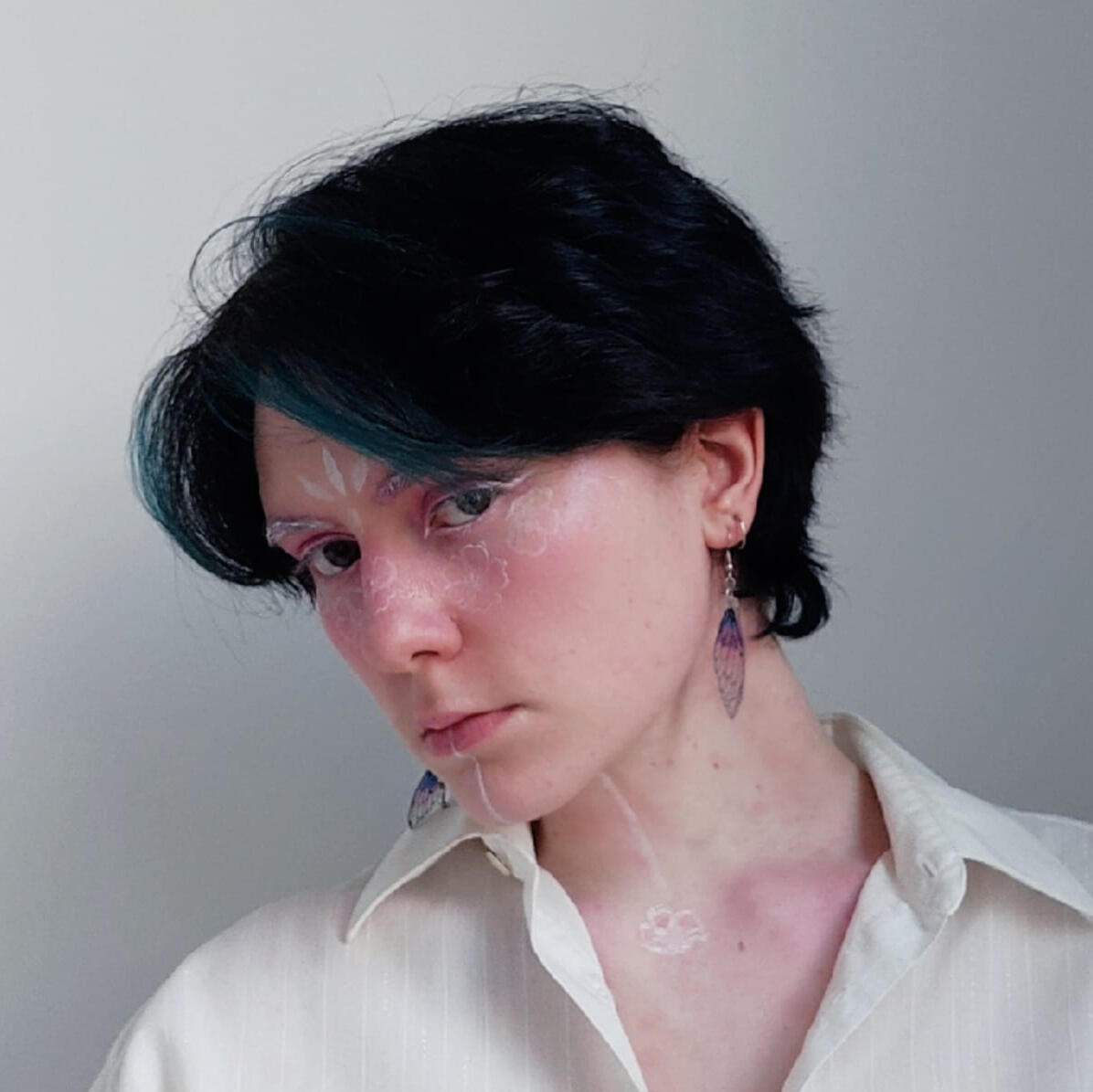
My Projects
The SLM Project
Designed for a German museum, this impact game addresses slavery in Dutch Brazil and Johann Mauritz's role, contributing to the museum's decolonization efforts.
Me and the Bois
A co-op puzzle game with unique, alternating collaboration modes that follows two robots on a mission to repair their friend.
The SLM Project

Game Hub

Mini Game One

Mini Game Two
Uncover history's layers in the SLM Project - a captivating game addressing Dutch Brazil's slavery, and Johan Maurits' involvement in it through interactive storytelling.
Genre: Impact Game, Single Player, Point & Click
Perspective: 2D
Platform: Tablet
Roles: Design
Production year: 2023
The SLM Project is a 2D point-and-click game featuring two mini-games within a book framework. While playing, the recipients gradually uncover information about Johan Maurits' activities in Dutch Brazil, revealing details about his involvement in slave ownership and trade. The first mini-game is a hidden object experience set in Johan Maurits' court, while the second explores his role in transatlantic slave trade through a narrative-based card-matching mechanism.
The SLM Project, developed during my sixth semester in the Digital Games B.A., addresses slavery in Dutch Brazil and Johan Maurits' involvement in it. Created for the Siegerlandmuseum, it aims to prompt critical reevaluation of prevailing, predominantly favorable biases, fostering nuanced perspectives and informed opinions. The project contributes to the museum's decolonization efforts in the Johan Maurits section with an academically informed approach.
Gameplay Trailer
Design Focus
Challenges & Solutions
We consider these factors to be vital in creating a game experience that cultivates intrinsic motivation among players, fostering an innate desire to engage with the game and acquire knowledge driven by their own volition and decision-making.
1. Managing impact - Deliver an objective and informative perspective
Informative Design: Crafting game elements that convey facts and details without imposing a particular viewpoint.
Factual Empowerment: Equipping players with accurate information, enabling them to shape their own perspectives independently.
2. Accessibility considerations - Encompass intuitive input mechanisms, multilingual options, and succinct information delivery
Curated information
Simplified and Normal Mode: Two separate modes with more or less depth of information for an optimized user experience
Core Mechanics based on very few simple gestures (tap, drag, swipe)
Clearly readable game structure with flat scene hierarchy
Strong emphasis on signs & feedback: Tangible progression indicator & subtle emphasis on differentiated emotional impact
Bilingual language options for German and international museum visitors
3. Museum environment considerations - Emphasise brief gameplay experiences and
suitability for groups
Age-appropriate language for discussing sensitive topics like transatlantic slave trade and slave ownership.
Shareable gameplay with incorporation of off-hand play
Visual embedding of game in the museum space, connecting in-game and out-game elements and therefore encouraging engagement with exhibit/city as an extension of game elements
Role and Responsibilities
Game Design
As a key collaborator with the fellow game designer, Jana Lehning, our teamwork involved constant idea exchange and joint decision-making.
My primary focus was on extensive research, delving into articles, books, and historical accounts to authentically represent Johan Maurits, Dutch Brazil, and the broader historical context. I aimed to ensure accuracy in portraying in-game elements such as clothing, characters, flora & fauna, furniture, contributing to a believable and historically accurate game world.
Genre: Cooperative puzzle game
Perspective: 2D isometric
Platform: Personal Computer
Roles: Design and Project Lead
Production year: 2021/22
In this local co-op game, the players take control of two robots, one powered by solar energy and the other by wind energy. Their goal is to collect the missing pieces needed for the repair of their strange-looking robot friend. In search of these parts, the robots have to overcome several obstacles through cooperation and skillful usage of their unique abilities to traverse the slowly eroding city.
In 'Me and the Bois,' developed during my third semester in the Digital Games B.A., a distinctive alternating collaboration mode mechanic shapes the core gameplay.
In the 'consecutive co-op mode,' players control individual robots with complementary abilities, working collaboratively to advance. The 'simultaneous co-op mode' merges both robots, resulting in shared control. Successful completion of the game requires mastery of two communication, control, and collaboration modes, ensuring high player engagement.
Gameplay Trailer
Design Focus
Challenges & Solutions
1. Puzzle Design - Crafting engaging challenges for cooperative play.
Collaborative Engagement: Devise challenges that require both players to actively participate, fostering communication and teamwork.
Balanced Complexity: Aim for puzzles that are forgiving yet present a fun and moderately challenging experience.
Communication Emphasis: Emphasize communication as a key element in puzzle-solving, encouraging players to discuss strategies and share excitement.
2. Co-dependency Ability Design - Integrating mutual dependency as a key concept to create challenges and incentives for cooperation between players.
Individual Abilities Aligned with Dependency: Design the robots with complementary abilities. E.g.: Solar robot: horizontal arm extension for object retrieval and self-motion towards fixed objects. Wind robot: flying and vertically extending arm for lifting objects.
Fusion Mechanic: Allow the two robots to merge into a larger entity, unlocking essential abilities necessary to overcome challenges that cannot be tackled by the individual robots.
3. Implicit Worldbuilding - Unfold the game's narrative and define its world through subtle storytelling.
Nature's Reclamation: Solar-punk overgrowth hints at a world reclaimed by nature, devoid of humans.
Robotic Legacy: Integrate the tutorial within a robot advertisement, emphasizing their past significance in a human-populated world.
Autonomous Thriving: Illustrate solar and wind-powered systems, showing robots thriving independently of human intervention, while connecting collected human bones with the menu's skeleton, subtly revealing the robots' quest for revival and showcasing game progression through evolving start and end screens.

Incomplete Skeleton

Complete Skeleton
Role and Responsibilities
Game Design & Project Lead
As the sole game designer for the project, I played a comprehensive role in shaping every aspect of the game. From conceptualizing abilities and core mechanics to defining the theme and contributing to the aesthetic, I took charge of puzzle creation, level design, and conceptualizing the tutorial section. Additionally, I collaborated with artists to assist in animations. In the capacity of team lead, I ensured cohesion and efficiency by conducting team meetings, providing individual support, and fostering a collaborative environment to achieve our common goal.
Hold my hand - I'm scared

Controls

Environment

Dialogue
Embark on the plastic bag's last adventure, and get a chance to encounter a diverse cast of characters!
Genre: Narrative, Experimental, Impact Game
Perspective: 2D
Platform: Personal Computer
Roles: Design and Project Lead
Production year: 2022
In this narrative game, players embody a single-use plastic bag discarded in a garbage dump near the beach, embarking on its final journey downhill. Along the way, players encounter "trash-beings" – anthropomorphic characters made from everyday objects – with whom they can engage in conversation by holding onto them. The game provides a distinctive experience with its experimental approach, featuring a custom controller modeled after a human hand that aims to recreate the sensation of holding a hand while playing.
"Hold my hand, I'm scared" emerged as an experimental project during my fourth semester in the Digital Games B.A. program, aiming to push the boundaries of gaming as a medium for critical thought within the context of the climate crisis.
The game's relevance lies in its thematization of the current state of recycling behavior and the ensuing detrimental consequences, serving as a unique and immersive approach to sensitize players to this pressing issue. By engaging with themes of sustainability and consumerism, the game contributes to a broader conversation on environmental awareness.
Gameplay Trailer
Design Focus
Challenges & Solutions
1. Impact on Players - Inspiring Change Through Environmental Empathy
Foster empathy for anthropomorphic characters with thought-provoking background stories based on environmental themes.
Solidifying and reinforcing information through repeatedly discussing different environmental subtopics through diverse character perspectives.
Inspire positive change in the players' future behavior by raising awareness and suggesting actionable solutions.
2. Alternative Hand Controller - Design for immersive connection
Hand-Shaped Controller Design: Replicates the sensation of holding a human hand, fostering an immersive gaming experience and establishing a personal connection between the player and in-game characters, promoting empathy.
Construct the hand controller from recycled materials, symbolizing an extension of the game into the real world and promoting sustainability.
In-Game Interaction Mechanism: Utilize continuous button pressing on the hand controller for in-game character conversations, enforcing a connection; releasing the button in the real world mirrors the character losing grip, resuming its downhill descent.
3. Narrative Design - Emphasize meaningful player choices to enrich the narrative experience.
Morality Point System: Implement a binary morality system (0 or 1 points) for player dialogue choices, that determine the end-monologues tone (naive, optimistic, realistic).
Tracking Player-Character Interactions: Vary the depth of the reflection on character interactions and their corresponding theme in the end-monologue based on conversation length.
Role and Responsibilities
Game Design & Project Lead
In my dual role as the sole game designer and team lead, I took charge of conceiving and refining the game concept, determining themes, creating characters, writing dialogues, and devising the morality point system and hand controller controls. I also collaborated with our programmer in building the hand controller.As team lead, I ensured cohesion and efficiency by conducting team meetings to foster a collaborative environment to achieve our common goal.
Cozy Coffee Cove

Game Menu

Environment

Recipe Book
Discover the joy of friendship, fall magic, and the art of simple pleasures in Cozy Coffee Cove!
Genre: Cozy management single player game
Perspective: 2D
Platform: Personal Computer
Roles: Design, Art
Production year: 2023
As the café's owner, you'll brew not just coffee but also heartwarming friendships with a delightful cast of forest animals. Your choices matter: Will you charge your furry customers for their orders, raking in profits? Or will you cultivate deep bonds by serving treats and beverages for free, unlocking magical ingredients, and crafting intricate creations?
Cozy Coffe Cove was my teams submission to the 72-hour Cozy Fall Jam and ended up ranking as the second-best submission. Centered on the theme 'Less is more,' the game unfolds a heartwarming narrative. It explores the profound notion that kindness and generosity ripple through communities, inspiring others to follow suit. In the cozy forest community ambiance, providing treats and coffee free of charge nurtures profound bonds with the cafés visitors. This, in turn, unlocks exclusive areas and ingredients unattainable through in-game currency.
Gameplay Trailer
Design Focus
Challenges & Solutions
1. Conveying a Message Through Gameplay - Integrating the theme of "less is more" into the gaming experience.
Encouraging Organic Discovery: The game intentionally refrains from directly explaining the link between generous behavior and the unlocking system, letting players independently discover the core message.
Subtle Guidance Strategies: the game employs diverse hints, incorporating elements like iconography and positive feedback, among others, to steer players towards adopting a generous approach in the gameplay.
2. System Design - Design elegant and interconnecting systems
The crafting and progression systems we designed mutually influence each other. Progression, represented by unlocking new ingredients and cosmetic updates, enhances the complexity of the crafting system, leading to further in-game advancement.
Role and Responsibilities
Game Design & 2D Art
During the game jam, I embraced a multi-faceted role, contributing to both art and design aspects of the project. On the design front, I primarily focused on conceptualizing the progression and unlock system, while in the realm of art, I focused on crafting the UI and character cosmetics for the game.
World Building Work Samples
A collection of world-building concepts I created.
Explore a selection of my world-building concepts written during the fifth and sixth semesters of my Digital Games B.A. Each concept revolves around a unique theme, offering a glimpse into my creative exploration.
1. Researching the past - a world building concept based on an old newspaper article
In this micro perspective world-building concept inspired by a 1946 newspaper article, I crafted an alternative reality centered around the town of Imber. Adapted to annual floods, Imber's residents thrive in a technological landscape resembling the early 19th century, utilizing the natural force for agricultural and fishery benefits.
2. Researching the present - a world building concept based on a scientific article
In this world-building concept derived from a 2016 scientific research report, I envisioned a future eight years from now. The report, titled 'Harmful Algal Blooms and Public Health,' delves into the causes and symptoms of algal-related illnesses and their potential impact on local industries. Set on Earth, particularly the North American continent, the concept explores a catastrophic event triggered by a super-fertilizer in 2027. The worldwide harmful algal blooms resulting from its use lead to mass extinction, affecting both wildlife and humans.
3. Researching the future - a world building concept based on a piece of sci-fi media
In this world-building concept inspired by the cyberpunk series Altered Carbon, the futuristic mega-city Illusio-C209 is the backdrop. Set 340 years into the future; society is deeply influenced by human enhancement technologies, beginning with physical modifications and progressing to mind-altering advancements like 'ME.Share' chips. The narrative unfolds in a micro perspective, exploring the societal impact of these technologies within Illusio-C209, offering a glimpse into a future where memories and consciousness can be transferred, but not multiplied, among individuals.
4. An unequal pair - a world building concept based on an asymmetrical character duo
In this world-building concept, an unequal pair drives the narrative—a powerful yet physically constrained character relies on an enabler to access their abilities. Though not conventionally powerful, the enabler gains significance in resolving the conflict. Set in a small settlement resembling Earth's bronze age, the story unfolds as the colony faces an ecosystem-threatening insect pest, seeking countermeasures to avert disaster.
Full-length Concepts





